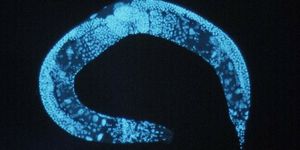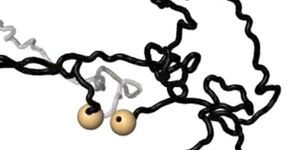Dirty news: soil causes global warming
Here’s a surprise you would have never seen coming: after a 26 year-long study, scientists have determined that soil can cause a positive feedback loop that actually drives climate change.
Led by Jerry Melillo from the Marine Biological Laboratory (MBL), the study was conducted at the Harvard Forest in Massachusetts. Though its findings were published recently in Science, the study actually began in 1991 in a deciduous stand. They wanted to predict how a warming soil would affect the trees, the ecosystem, and the atmosphere around it. If you want, you can visit Harvard Forest and see the experiment (like I did back in university), which still is going on today.
In 1991, the team of researchers buried electrical cables in different plots throughout the forest stand and heated the soil 5° C above the ambient temperature of control plots. This was to insinuate the predicted temperature change due to global warming. What they found was unexpected: the warmed plots lost 17% of the carbon that had been stored in organic matter in the top 60 centimeters of soil.
"To put this in context," Melillo says, "each year, mostly from fossil fuel burning, we are releasing about 10 billion metric tons of carbon into the atmosphere. That's what's causing the increase in atmospheric carbon dioxide concentration and global warming. The world's soils contain about 3,500 billion metric tons of carbon. If a significant amount of that soil carbon is added to the atmosphere, due to microbial activity in warmer soils, that will accelerate the global warming process. And once this self-reinforcing feedback begins, there is no easy way to turn it off. There is no switch to flip."
The team’s research was broken up into four phases: Phase I (1991 to 2000), Phase II (2001-2007), Phase III (2008-2013), and Phase IV (2014 to present). The carbon loss from the soil into the atmosphere was by no means stable throughout each phase.
- In Phase I, soil carbon loss happened quickly at first and then went to almost nothing.
- In Phase II, there was no difference in carbon emissions between the warmed and the control plots.
- In Phase III, carbon release from heated plots again exceeded that from control plots.
- During that time, microbes that can degrade more recalcitrant soil organic matter, such as lignin, became more dominant, as shown by genomic and extracellular enzyme analyses.
- In Phase IV (2014 to current), carbon emissions from the heated plots have again dropped. The team predicts the cycle to continue, with the next phase representing more carbon loss from the heated plots.
Overall, this is really bad news. It means that once the soil warms, it may set off an unstoppable cycle of carbon emissions.
"The future is a warmer future. How much warmer is the issue," Melillo says. "In terms of carbon emissions from fossil fuels, we could control that. We could shut down coal-fired power plants, for example. But if the microbes in all landscapes respond to warming in the same way as we've observed in mid-latitude forest soils, this self-reinforcing feedback phenomenon will go on for a while and we are not going to be able to turn those microbes off. Of special concern is the big pool of easily decomposed carbon that is frozen in Artic soils. As those soils thaw out, this feedback phenomenon would be an important component of the climate system, with climate change feeding itself in a warming world."
Sources: Science Daily, Science









